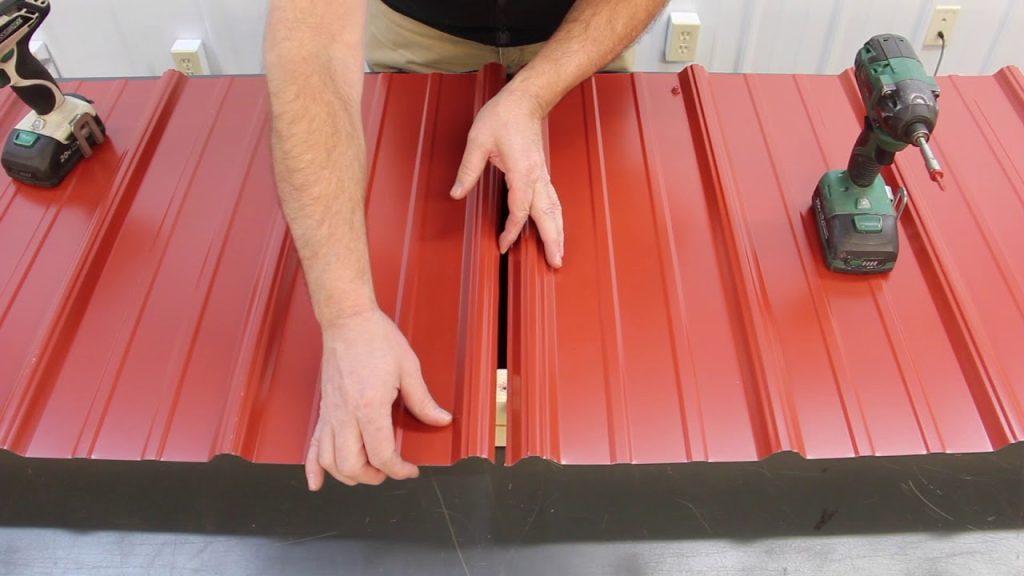Metal roofing has gained immense popularity in recent years due to its durability, energy efficiency, and aesthetic appeal. One crucial aspect of installing metal roofing that often goes unnoticed is the screw pattern. Properly laying out the screw pattern is vital for ensuring the roof’s structural integrity, preventing leaks, and maximizing the roof’s lifespan. In this article, we will delve into the importance of a well-designed metal roofing screw pattern, highlighting the best practices for installation to help you achieve a long-lasting and reliable metal roof.

Understanding the Significance of a Metal Roofing Screw Pattern
The screw pattern is the arrangement and placement of screws that secure the metal roofing panels to the underlying structure. This seemingly mundane aspect of metal roofing installation plays a significant role in the roof’s performance and longevity. An inadequate screw pattern can lead to numerous issues, such as leaks, roof noise, and even premature failure of the roof system.
Importance of Proper Screw Spacing
Ensuring the right screw spacing is crucial for preventing roof leaks. If the screws are too far apart, there is a higher risk of the panels shifting or buckling during extreme weather conditions. On the other hand, placing screws too close to each other can cause the metal to warp due to expansion and contraction, especially in fluctuating temperatures. Manufacturers typically provide guidelines for the recommended screw spacing, and it is essential to adhere to these guidelines to maintain the roof’s warranty and prevent potential problems.
Balancing Aesthetics and Functionality
Apart from functionality, a well-designed screw pattern also contributes to the roof’s aesthetics. When installing a metal roof, homeowners often seek a seamless and visually appealing appearance. An improperly placed screw pattern can disrupt the roof’s visual harmony, diminishing its curb appeal. By following the manufacturer’s recommendations and industry best practices, roofing professionals can strike the right balance between functionality and aesthetics.
Best Practices for Metal Roofing Screw Patterns
Follow Manufacturer Guidelines
Metal roofing manufacturers invest considerable time and resources in research and testing to determine the optimal screw patterns for their products. As a result, it is essential to carefully read and follow the manufacturer’s installation guidelines and screw spacing recommendations. These guidelines are specific to each product and are designed to ensure the roof’s performance, durability, and warranty validity.
Consider Environmental Factors
Environmental factors play a significant role in determining the ideal metal roofing screw pattern. For instance, regions prone to high winds require more robust fastening systems to secure the roof panels firmly. Similarly, areas with frequent temperature fluctuations necessitate a screw pattern that allows for metal expansion and contraction without causing damage. Taking these factors into account during the planning and installation process is critical to the roof’s long-term success.
Use High-Quality Screws and Accessories
The choice of screws and accessories can significantly impact the effectiveness of the metal roofing screw pattern. Opt for high-quality, corrosion-resistant screws specifically designed for metal roofing applications. Low-quality screws may corrode over time, leading to weakened fastening and potential leaks. Additionally, consider using rubber or neoprene washers to provide a reliable seal and prevent water infiltration.
Conclusion
In conclusion, the metal roofing screw pattern is an integral aspect of the roof installation process that should not be overlooked. A well-designed screw pattern ensures the roof’s structural integrity, prevents leaks, and enhances its overall longevity. Following the manufacturer’s guidelines and considering environmental factors are essential best practices to create a robust and visually appealing metal roofing system. By paying attention to these details during installation, homeowners and roofing professionals can ensure that the metal roof stands strong and serves its purpose for many years to come. So, when it comes to metal roofing, remember, a properly laid out screw pattern is the key to success.



Leave a Reply